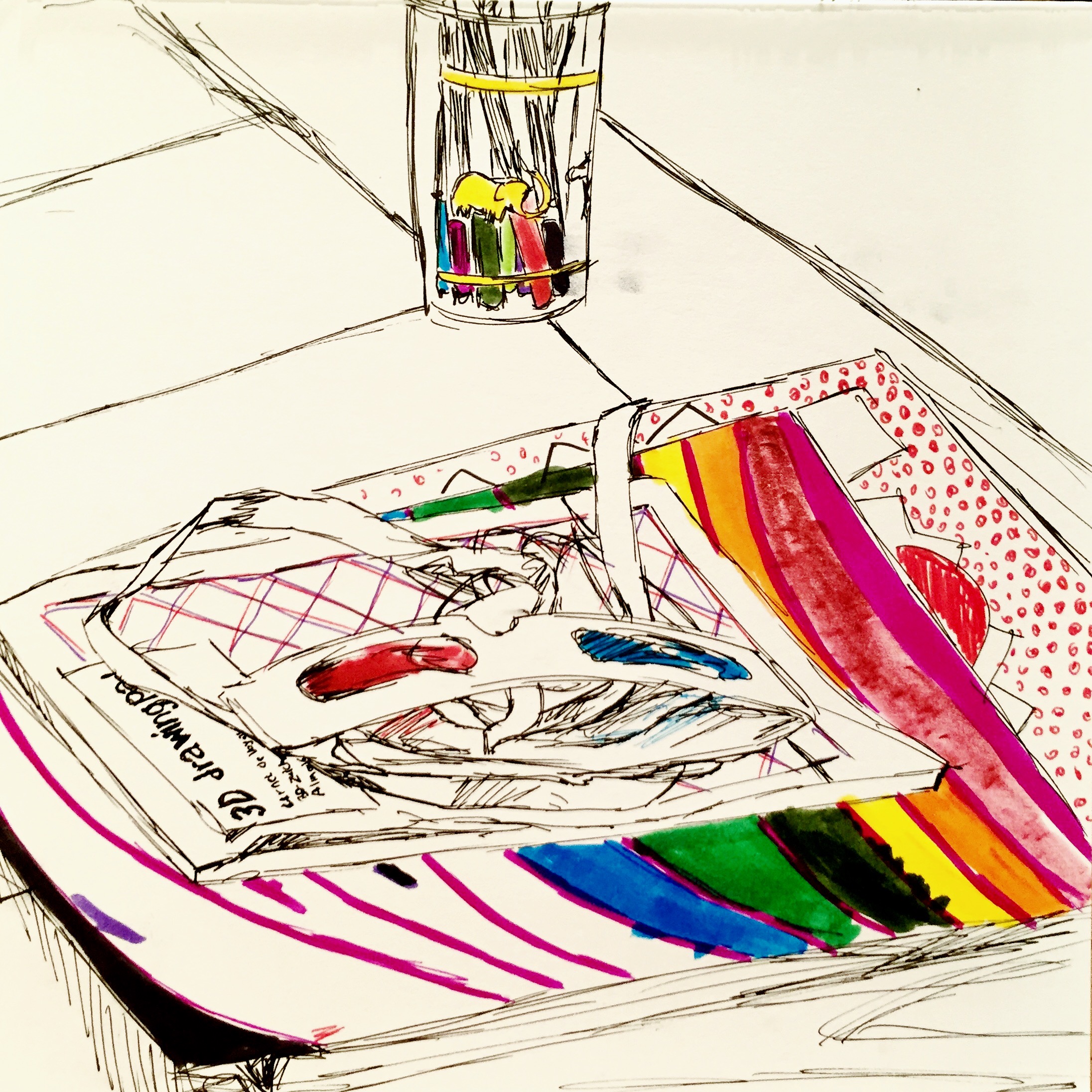The Rainbow Troops, Andrea Hirata, 2005
- Indonesia, #16
- Kindle edition, $10.00 from Amazon
- Read July 2017
- Rating: 4/5
- Recommended for: Bad news bears

This week we’re in Ireland visiting my husband’s family. It’s our first time making this trip since our daughter was weaned and I have to say parenting a jet-lagged toddler is a form of fresh hell I had not anticipated. I used to just be able to nurse her to sleep when I could tell she was tired. Now, although she’s delirious with fatigue, she just WILL NOT STAY IN BED. It’s obviously because it just doesn’t feel like bedtime to her, but it’s hard to keep that thought in mind after multiple hours of cajoling, bribing, pleading, and scolding to try to get her to actually lie down and close her eyes long enough to fall asleep. The first night we were all sitting around in our pajamas eating cheese sandwiches at 3 in the morning. Two nights ago she was rolling around in her bed at 1:30 a.m. demanding to be taken out for a walk. By the third night, she was so tired that she couldn’t walk in a straight line (small children, under the influence of fatigue, act even more like little drunks than they do when they’re wide awake, which can be hilarious but can also be a signal that unstoppable tantrums are just over the horizon), and we were hopeful that we might get her to bed by 11. At 10:30 we were trying to get her to stop jumping around and settle down enough to read a story when she abruptly decided to debut the new olympic event of jumping off our bed onto her small toddler bed. However, as with any new sport, it takes some practice to get it right. On her first attempt, she overshot the landing zone and crashed face-first into the wall, ending up with a possible concussion, lacerated gums, and a rapidly swelling nose. We took her to the emergency room, where we were informed that the current wait time was about four and a half hours. I went outside to call my dad for his medical opinion (he’s an infectious disease specialist, but I find myself consulting him about head traumas on a worryingly regular basis), while my husband sat down with the kid (who had stopped crying at this point and seemed pretty much fine except for her double-sized proboscis) on the floor of the overcrowded pediatric waiting room and started to read to her. Between sentences he looked around at the other patients. It struck him as odd that there didn’t seem to be any children with obvious injuries among the crowd in the waiting room. And many of the children were looking pale and holding small plastic bags. And just as he was putting two and two together, the kid nearest to him began to vomit into her little bag and he started to feel like Cillian Murphy waking up in the middle of the zombie apocalypse in 28 Days Later.

My dad said that even if her nose was broken there wasn’t much that could be done unless it looked crooked and needed to be set (and even that, I found through some frantic googling, would usually happen a couple of days after the break, once the swelling had gone down—I didn’t know because my only experience with a broken nose was when my husband butted heads with another of our teammates during a game of rugby and promptly reset his nose himself on the sidelines, which is probably the most hardcore thing I’ve ever seen him do, its impact only slightly lessened by the fact that we were playing tag rugby, a supposedly zero-contact version of the sport). She wasn’t showing any signs of a concussion and we decided, on balance, that it was probably safer to bring her home before she caught norovirus for the second time this year, and get her assessed by a doctor in the morning. We washed our hands, grabbed the child, and booked it out of there like Brad Pitt backing up the SUV in World War Z. By the time we got back to the hotel it was one in the morning and the kid was WIRED. We read her every book we had. She demanded lullabies. She demanded a massage. She got up and demanded food, which she then refused to eat. She wanted to play. She insisted that she would not be able to sleep unless she was watching TV (we declined). We let her get in our bed. We sang to her, told her stories, rubbed her back, threatened to move her to her own bed if she didn’t stop talking, promised movies and toys and books in the morning. Finally, just before 3 a.m. (at which point my husband and I were hating life, the world, international travel, and each other), she asked us, “What’s a minion?” and then abruptly fell asleep, and we managed to get nearly seven hours of shut-eye before we had to get her up to go to the doctor (upshot: she’s fine).

So anyway, today, after several nights of minimal, interrupted sleep and days of parenting a toddler swinging even more rapidly than usual between unrestrained hilarity and inconsolable hysteria, I will offer you my synopsis and review of Andrea Hirata’s The Rainbow Troops, the bestselling novel ever to come out of Indonesia.
It’s a mostly heartwarming story of a rag-tag band of lovable misfits, the ten pupils of a ramshackle one-room school in a remote province on the island of Sumatra. These are the kids who are too poor to attend any school but the free one run by a Muslim charity, whose parents “weren’t convinced that their children’s education, which they could only afford up to junior high, would brighten their family’s futures.” The book follows the well-worn tread of tales of fighting against the odds, except that after a book’s worth of idealized poverty and optimism, it ends on a note of rather depressing realism. I don’t necessarily think this is a drawback, but it was rather surprising to find, after a series of almost cloyingly charming anecdotes about these adorable, ambitious children and their devoted teachers, that for most of them, their circumstances—of poverty, of racial barriers, of geography—were inescapable after all.

There isn’t too much of a plot; it’s more of a series of anecdotes tied together in loosely chronological order. One of the major connecting plot points—that of the amoral tin mining company that wants to bulldoze the school to mine underneath it—was apparently added for the English translation (along with other changes, both minor and substantial). It could almost be classified as a memoir; Hirata and his publishers have stressed the autobiographical nature of the story. His former classmates have been on talk shows, and his teacher, Ibu Muslimah, was given an award by the government for her service to education. But on the other hand, one of the main characters, whose heartbreaking story is perhaps the one that would most inspire the book’s readers to push for social change, is not remembered by any of the other students, nor by the teachers, though Hirata insists that he is real, and that he is currently working as a truck driver.
These puzzling inconsistencies aside, it was an enjoyable read, if not particularly challenging. It’s a bestseller, and it feels like a bestseller; easy to read, easy to understand, easy, ultimately, to forget. However, it’s interesting to see such a well-worn trope translated to a setting that, for many westerners, is so entirely unfamiliar.


Good luck with the jet lag! I hadn’t realized that The Rainbow Troops was changed in translation, thanks for the heads up on that. I guess I understand the economic reasoning in making changes to translations, but I find it frustrating. Something I like about reading translations is getting some access to different ways of writing and thinking.
LikeLike
Yeah, it’s kind of weird, I actually never realized that changes could be so extensive. Did you read the article I linked in the blog post? It makes me wish I could read Indonesian so I could see how different the original is. Some of the changes they made–like lowering the teacher’s age from early 20s to 15–made no sense to me, either from a plot or a marketing standpoint. It’s a shame they felt the need to do it, but on the other hand, I don’t feel that a great work of literature was sacrificed, and the popularity of the book has done great things for Hirata’s hometown, so maybe the changes are for the greater good. I don’t know.
LikeLiked by 1 person
Yes, I did read that article. The change in the teacher’s age is definitely strange. I guess it makes the educational challenges the students faced sound even more dramatic, but that seems pretty artificial and misleading.
LikeLike
Interesting. Did the author ever explain in interviews why he approved the changes to the translations?
LikeLike
Not that I know of. I assume they were changes suggested by editors and/or publishers to increase the book’s marketability in other countries.
LikeLike
Great review. Beautiful rainbow themed photographs and watercolors. The Seychelles rainbow is stunning. Traveling with toddlers tip: Benedryl.
LikeLike
Hahah thanks mom. I love that I’m suddenly getting a whole bunch of traffic every day from Antigua and Barbuda. Thanks for sacrificing your precious vacation time to catch up on my blog!
LikeLike
Hilarious prequel! I’m surprised you and your marriage survived.
I’m also surprised they haven’t made a movie about the altered version of the book. Sounds like an Oscar winner. Probably already I. The works. Love the artwork as always.
LikeLike
Thanks Deanna! There’s a film adaptation of the book, though I don’t know which version it’s based on (it’s an Indonesian film so probably the first). I gather that this sort of alteration happens more than we might realizes–presumably because the American market is so huge and self-involved that publishers assume international works have to be tailored to our tastes in order to succeed.
LikeLike